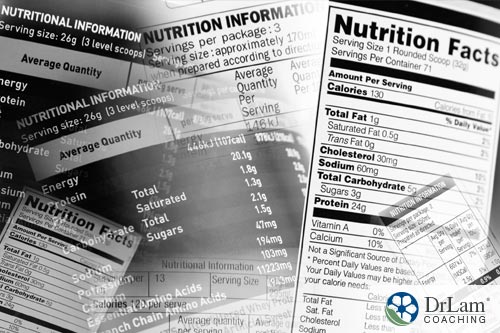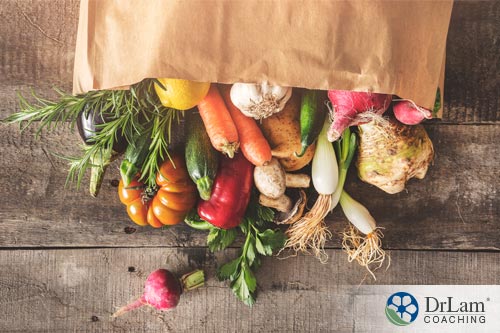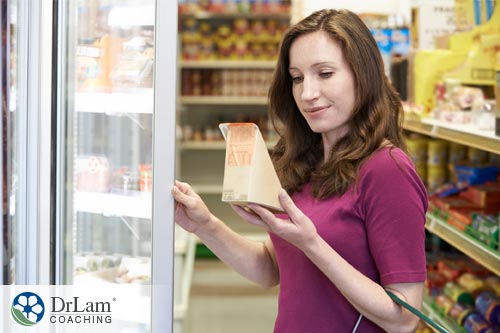 You’ve made the decision. You want to eat healthier food. It could be that your doctor recommended that you eat a better diet, you have a few ailments that require attention, or you’d like to lose a few pounds. Whatever your reasons for wanting to improve your diet and create a better lifestyle for yourself, it’s going to require a little bit of work on your end. You’ll need to commit to making better food choices but like many people, you may not know where to begin. You head to the grocery store and the idea of buying clean organic food seems like a foreign language. Wouldn’t it be great to have a nutrition label cheat sheet to refer to? Something easy to read that can help you make the right food product choices?
You’ve made the decision. You want to eat healthier food. It could be that your doctor recommended that you eat a better diet, you have a few ailments that require attention, or you’d like to lose a few pounds. Whatever your reasons for wanting to improve your diet and create a better lifestyle for yourself, it’s going to require a little bit of work on your end. You’ll need to commit to making better food choices but like many people, you may not know where to begin. You head to the grocery store and the idea of buying clean organic food seems like a foreign language. Wouldn’t it be great to have a nutrition label cheat sheet to refer to? Something easy to read that can help you make the right food product choices?
You may have been told many times to always read the label, but how do you know exactly what to look for? The majority of people have no idea what ingredients they’re consuming or what foods they should be choosing. However, eating a healthy diet doesn’t have to be so difficult and confusing. With the proper tools and knowledge, it can become an easy task. You’ll be able to zip through the grocery store with confidence using this nutrition label cheat sheet we’ve created. Save it on your smartphone and refer to it until the right food choices simply become second nature.
Let’s start here. As honest as we’d like to think food manufacturers are, the ingredients list is where they may be hiding some stuff you’ll want to avoid. You may already know to watch out for words like “sugar” and “sodium”, but what about the following:
Sugar may also appear as
Sodium can be listed as
Trans Fats can be hidden as
Beware! If a food has less than 0.5 grams of trans fat it can legally be listed as “trans fat-free”! These tiny servings add up quickly in baked goods and hardly anyone consumes the recommended tiny serving size listed on packages anyway.
Another important thing you should know about ingredients on the nutrition label cheat sheet is that they are listed in descending order by weight. Therefore, ingredients found in the largest quantities will be listed first. So, if you see sugar at the top of the list, the product is most-likely not a healthy choice.
Once you start reading the ingredients, you’ll begin to see lots of scientific words that sound like they came out of a chemistry book. Yes, all foods must be approved by the FDA and should be safe, but it’s still important to be informed about what exactly you’re eating. Stay away from artificial flavors and colors that are created in a lab and avoid preservatives since they have been linked to harmful diseases and other ailments.
 This is where it can get tricky, so be sure to keep your nutrition label cheat sheet handy. Food manufacturers can get a little bit sneaky by making a product sound really good as far as calories, sodium, trans fat, and sugars go, but the serving size is often unrealistic. The serving size information can be found in tiny letters in the top corner of the label. Notice how many servings are in one container. Next figure out your own portion size and compare it to the serving size suggested on the label. From this you can calculate how much you’ll actually be consuming. Some simple arithmetic may change your mind about eating certain products.
This is where it can get tricky, so be sure to keep your nutrition label cheat sheet handy. Food manufacturers can get a little bit sneaky by making a product sound really good as far as calories, sodium, trans fat, and sugars go, but the serving size is often unrealistic. The serving size information can be found in tiny letters in the top corner of the label. Notice how many servings are in one container. Next figure out your own portion size and compare it to the serving size suggested on the label. From this you can calculate how much you’ll actually be consuming. Some simple arithmetic may change your mind about eating certain products.
A good rule of thumb is to keep your snacks as low in calories as possible—anything below 40 calories. This is especially important if you’re trying to lose weight or maintain your current weight.
Although everyone’s calorie intake requirements are different and will depend on your needs, age, and gender, experts in the nutrition field recommend an average calorie intake per meal of
On average, a female should eat about 2000 calories a day to maintain her current weight and 1500 calories to lose a few pounds—about one pound per week. A male should consume 2500 calories a week to maintain his weight and 2000 calories a week to lose an average of one pound per week.
A nutrition label cheat sheet is important. Knowing how to read labels and consume the proper serving size can have many benefits, like the following:
Eating a healthy diet is essential for optimal health. However, it’s even more important for preventing or healing from chronic illnesses such as Adrenal Fatigue Syndrome (AFS). Conditions like AFS can be improved with a proper diet, and sufferers can definitely benefit from a nutrition label cheat sheet like this. It will give you the knowledge you need to make wise mealtime choices.
There are 8 key elements to an adrenal friendly diet that a nutrition label cheat sheet can help with:
Since the adrenal glands play an important role in the NeuroEndoMetabolic (NEM) stress response system, your entire body can be affected if they are not running inefficiently. The foods you eat are your first line of defense.
If your diet consists of fried or processed foods and loads of sugar and soda, you’re not alone. At this time, it is sadly considered the standard American diet and is one of the major contributing factors to AFS along with stress.
 For the healthiest options, reach for foods without labels like fruits and vegetables. Sometimes elaborate and beautiful packaging with exaggerated nutritional claims are just masking the less healthy ingredients.
For the healthiest options, reach for foods without labels like fruits and vegetables. Sometimes elaborate and beautiful packaging with exaggerated nutritional claims are just masking the less healthy ingredients.
The best foods for Adrenal Fatigue are (labelless):
The worst foods for Adrenal Fatigue are:
For this nutrition label cheat sheet, we’re basing all our estimates on the 2000-calorie diet. Make sure to adjust for your individual needs accordingly:

Remember, just because a product looks good, doesn’t mean it’s good for you. Always give yourself a bit of extra time to read the label when you’re in the grocery store. Become familiar with serving sizes, calories, and what nutrients you should be consuming and which ingredients to avoid.
Before you know it, you’ll be a pro. But remember, before starting any new diet regime, it’s important to discuss your diet changes with a knowledgeable AFS professional who specializes in nutrition. They can help you prepare meal plans that will ensure you’re getting all the nutrients your body needs to strengthen your adrenals and get back the energy that you’re longing for.
This nutrition label cheat sheet is great a guide for anyone trying to achieve better shopping habits in the grocery store but is having problems understanding the labels and serving sizes on the products they buy. It also has a great fact-check checklist!
